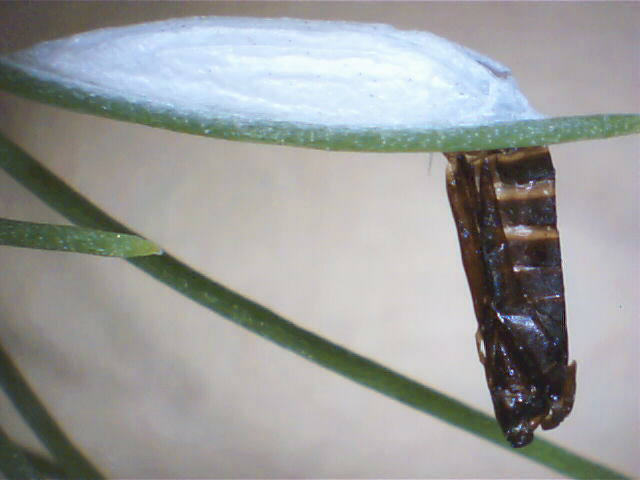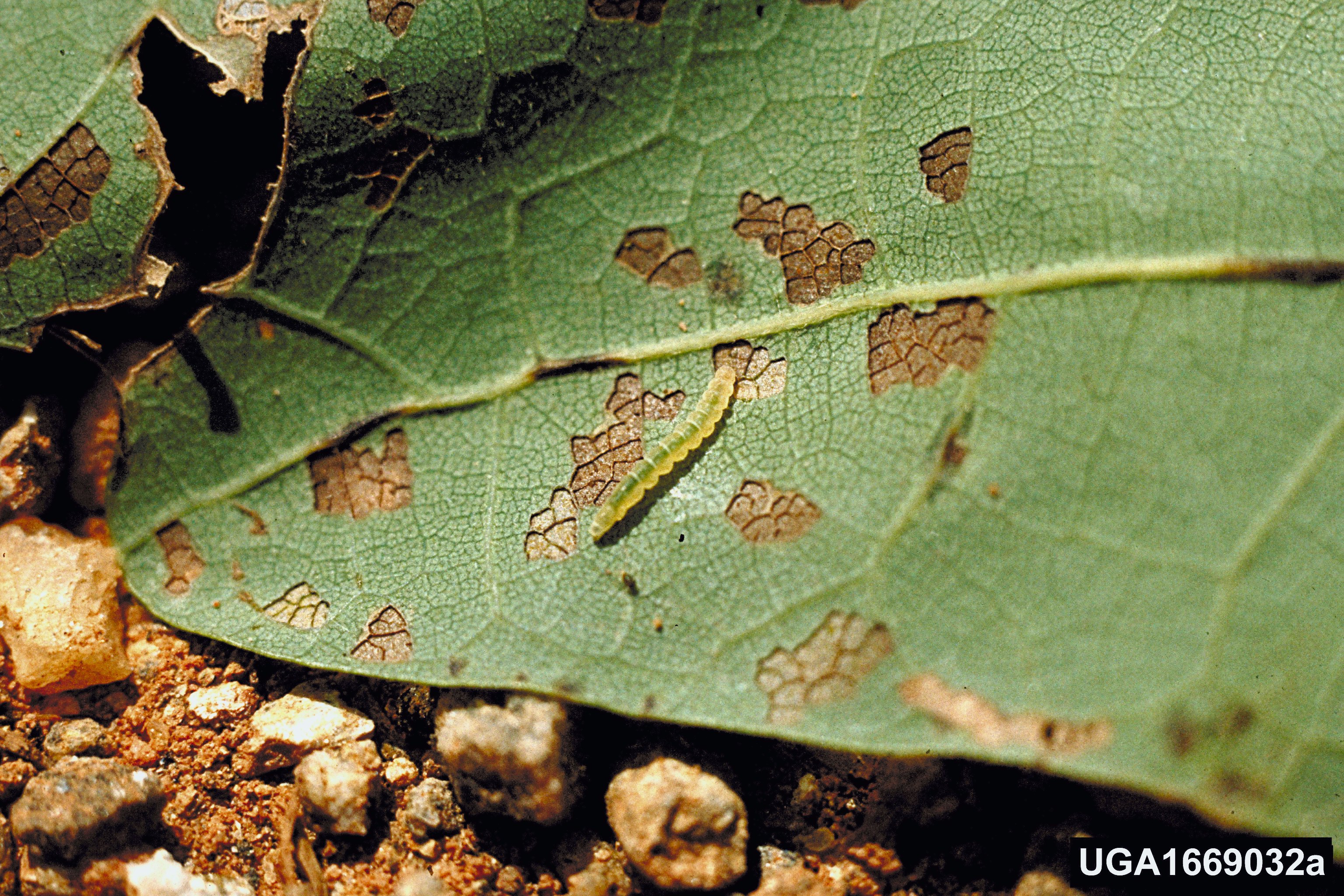What are these tiny caterpillars making cocoons all over my yard?
Oak skeletonizer caterpillars are no threat to oak trees, but they can be a real nuisance when they build cocoons on outdoor furniture.

The oak skeletonizer Bucculatrix ainsliella (Lepidoptera: Lyonetiidae) is a native insect that occurs throughout the Great Lakes region. The larval stages feed on the leaves of several species of oak. These tiny insects become a nuisance and terribly annoying when the larvae hang from the trees on silken threads and when they spin their cocoons on buildings, lawn furniture, vehicles, kitchen appliances and other items that we might have occasion to store in or use to decorate our landscapes. At this point, there is not much that can be done.
The term "skeletonizer" refers to the manner in which the larvae feed on the leaves; they eat the leaf tissue but leave the veins, giving the leaf a somewhat scabby appearance. Rarely is the feeding injury cause for alarm in Michigan. They do not bite people or pets. They do not attack or become established in dwellings.

There are two generations per year in Michigan. Most of the leaf feeding and annoyance problems we see are caused by the second generation in late August through September. They spend the winter months in small, white cocoons resembling ribbed grains of rice. The cocoons may be attached to fallen leaves, branches and limbs or nearby structures.
Unfortunately, little can done except washing or scraping them off. Spraying trees with an insecticide to control the caterpillars may help, but this can be very expensive when large trees are involved. In the spring, tiny little moths emerge and lay eggs on leaves where the larvae feed until they move off the host to pupate and begin the cycle again.




 Print
Print Email
Email